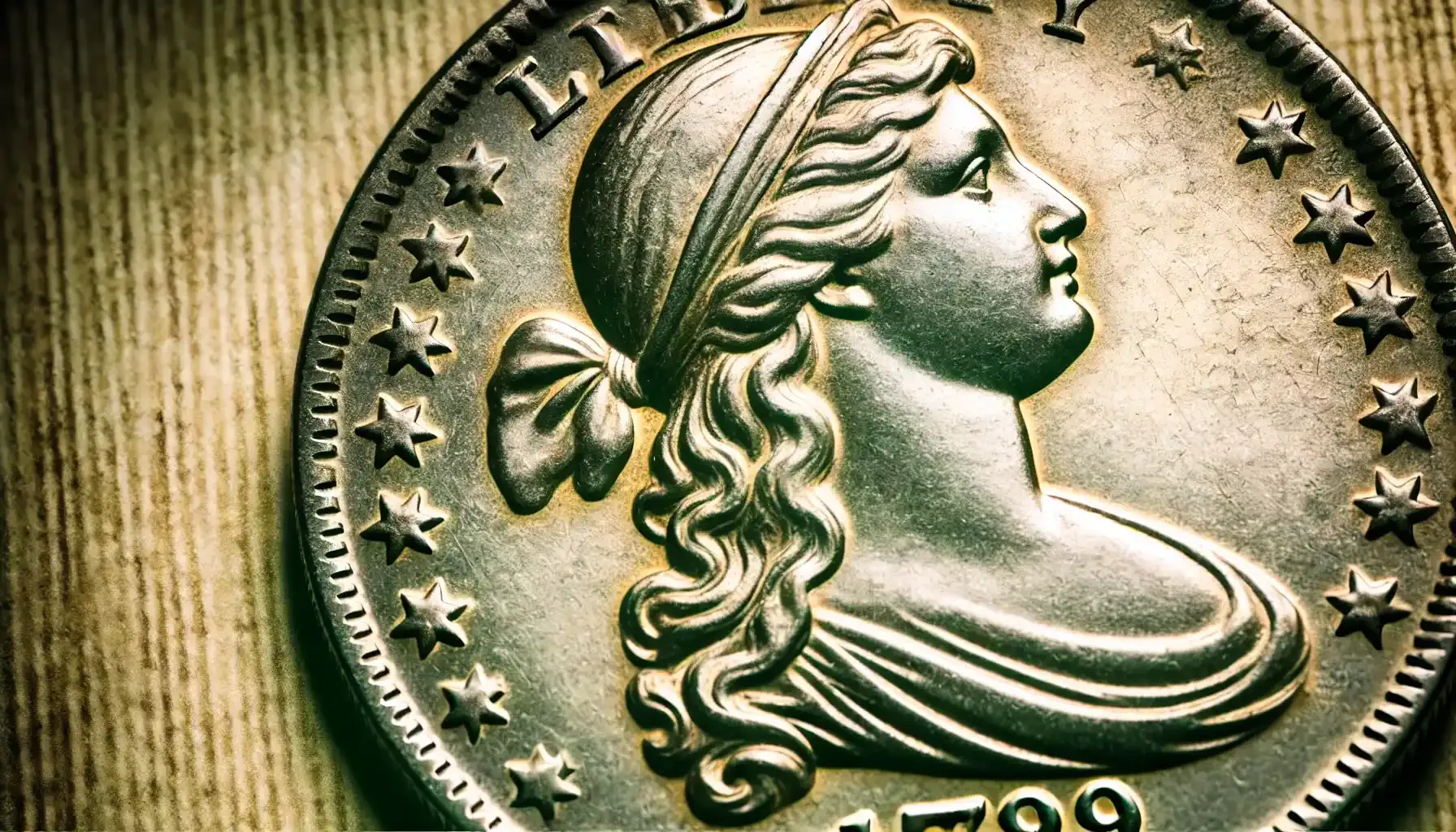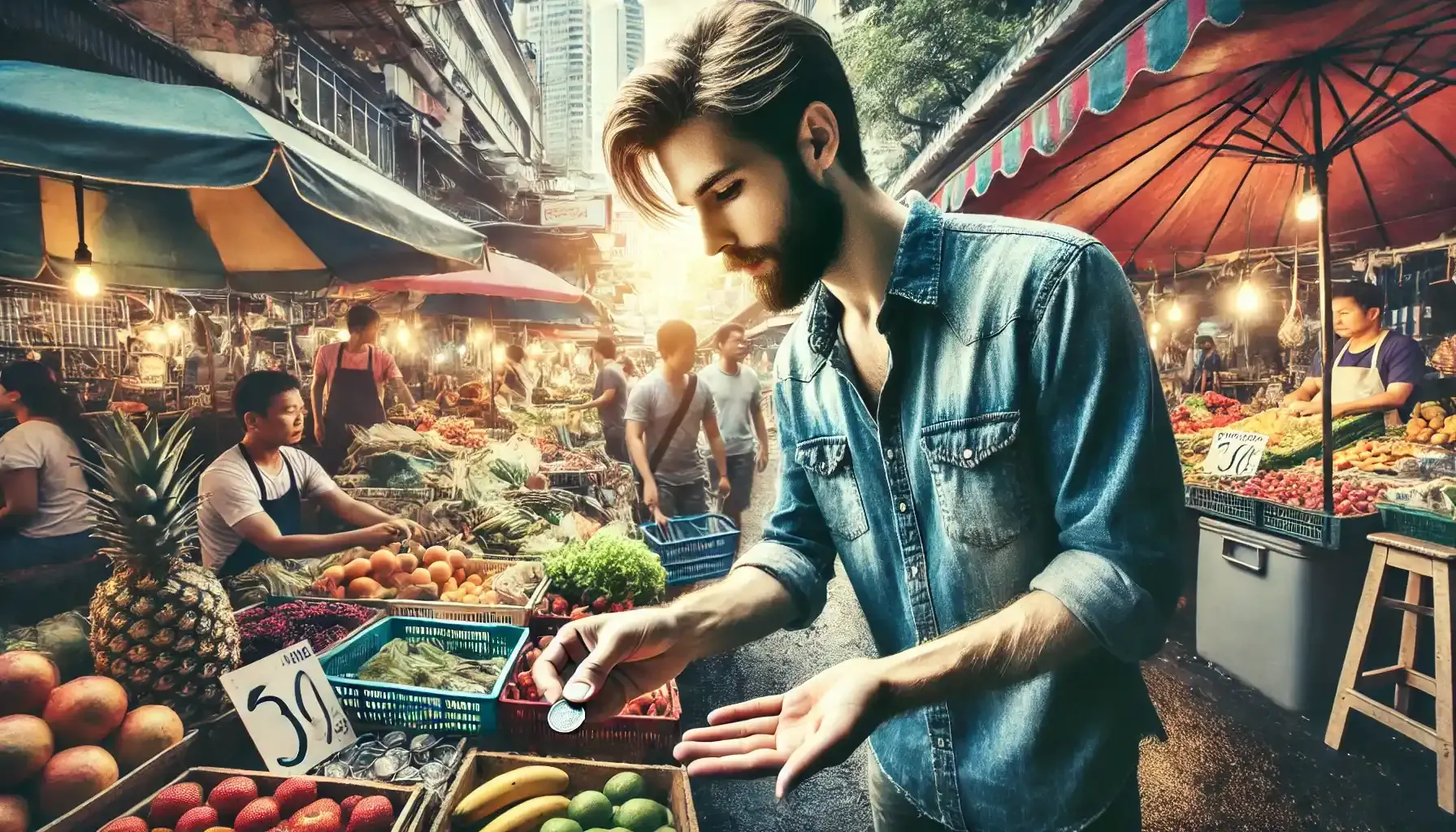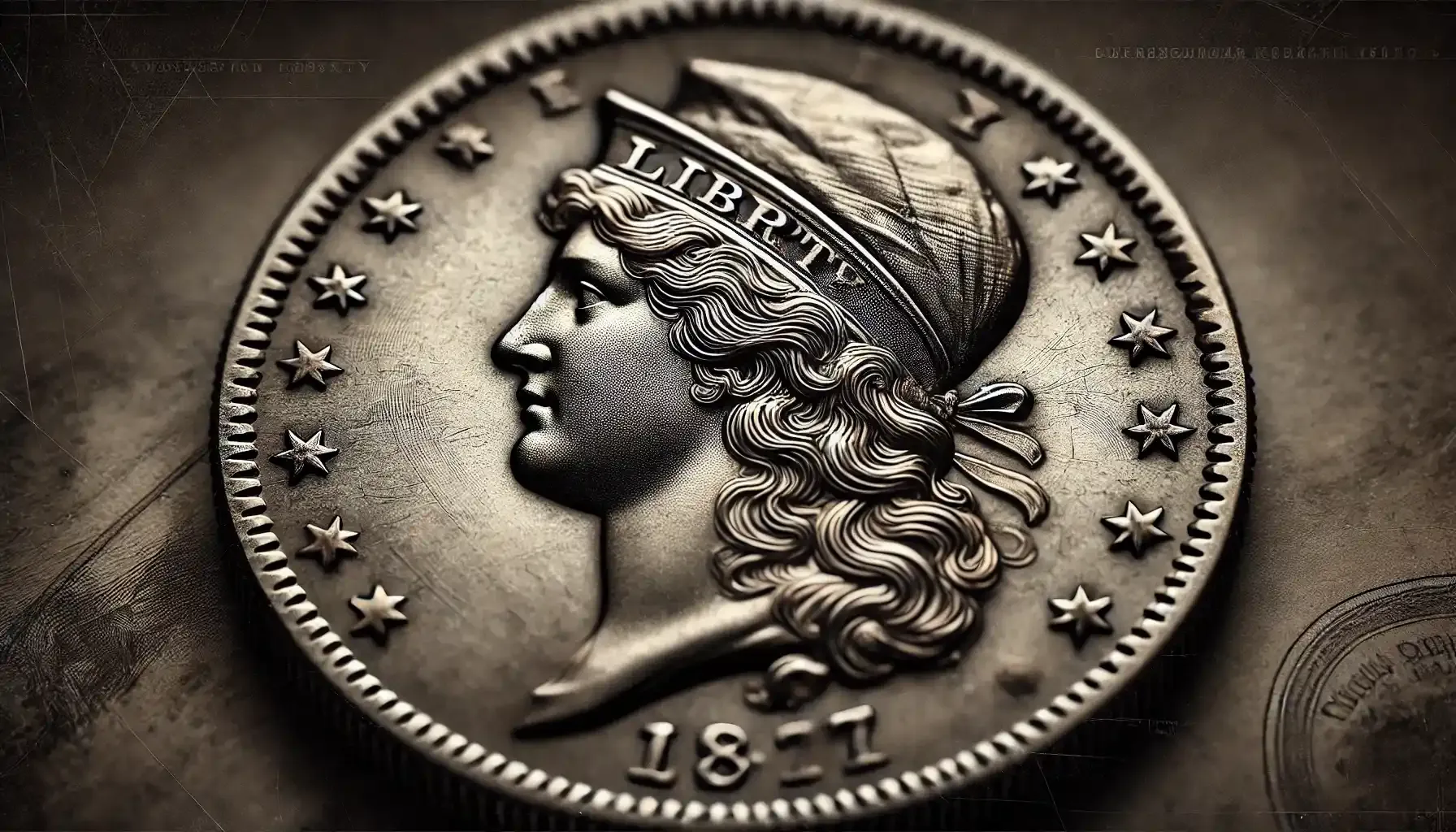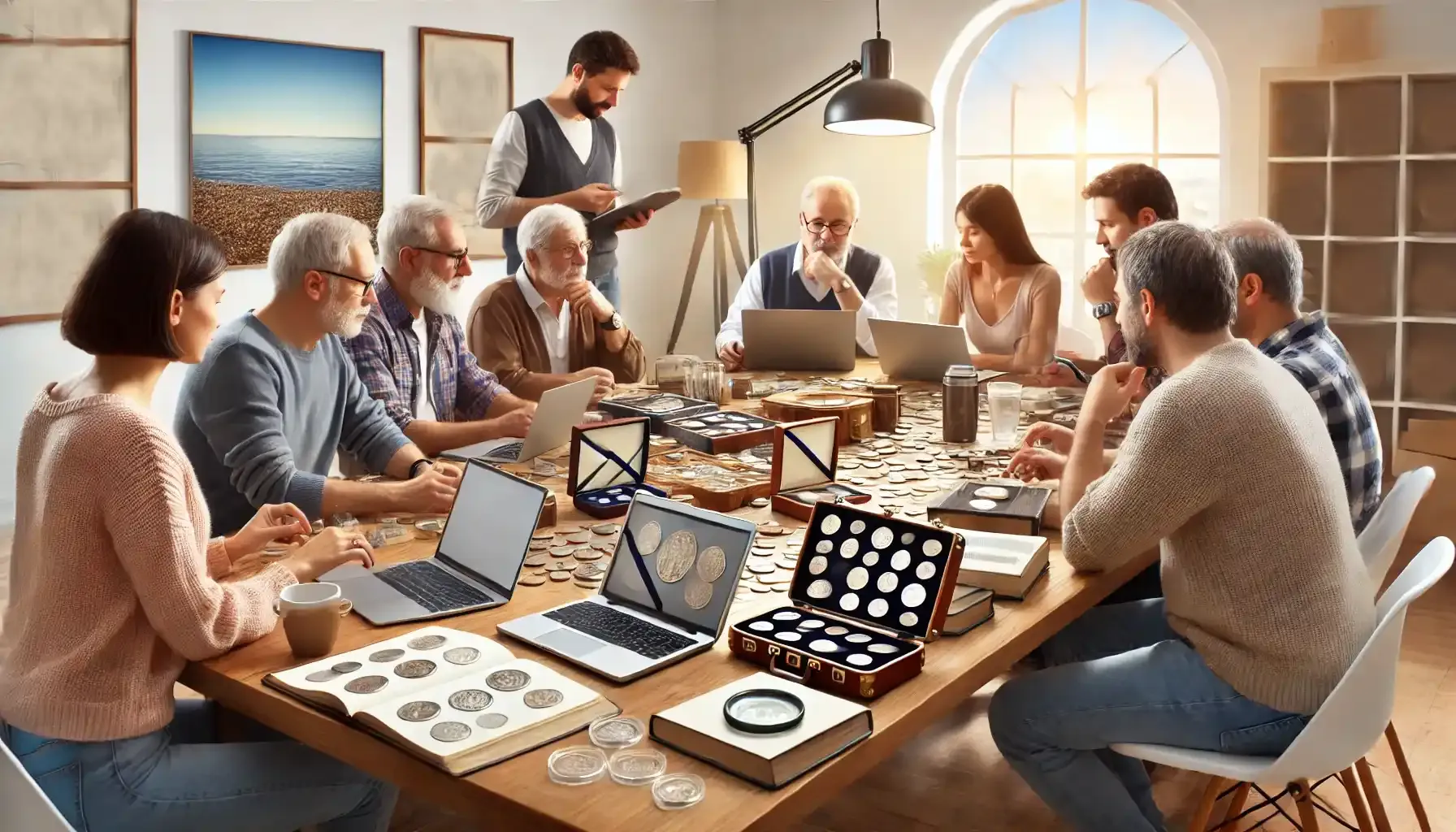Contents:
The American history of coinage is rich with symbolic depictions that reflect the nation and its spirit. It was during the early minting period that two coin series were born: there appeared the famous Draped Bust and Capped Bust coins, both capturing the aspiration for independence and identity of the new nation.
But why was one series of coins eventually replaced by another? What symbols and ideas do they reflect? What is the best way to check collector coins for value? And how much do these design patterns cost today?

Draped Bust Design
Since the late eighteenth century, the United States has sought to establish itself as a new nation with a cultural force by its side. The first series to mark the era of “state coins” was the Draped Bust in 1975.
The appearance of this series was indeed a landmark event. It was designed by the famous American portraitist Gilbert Stuart (who was also renowned for his portraits of George Washington). His design with the bust of Lady Liberty was meant to convey the ideals of freedom, and the image itself should have been classic and elegant. This is what he had done.
The Main Features

Obverse: Just like the 1 Cent USA 1964, it features Lady Liberty, with waving hair and an elegant drapery on her shoulders (which became an easily recognizable element and determined the name of the entire series).
Reverse: Early versions of the coins featured the Small Eagle (fine and detailed), which was replaced by the Heraldic Eagle (larger and more majestic) in 1798. The eagle is captured with its wings spread wide, holding an olive branch and a bundle of arrows.
Denominations
Draped Bust Half Cent: Minted from 1800 to 1808, copper.
Cent: Released from 1796 to 1807, copper.
Draped Bust Dime (10 cents): Issued from 1796 to 1807, silver.
Quarter (25 cents): Introduced in 1796, suspended in 1807, silver.
Draped Bust Half Dollar (50 cents): Minted from 1796 to 1807, silver.
Draped Bust Dollar: Issued from 1795 to 1804 (though most dated 1804 were struck later), silver.
Draped Bust Samples That Matter
1804 $1 Original - Class I (Proof)

Mintage: 8
Auction Record: $7,680,000 (PR68)
Known as the “King of American Coins”, this diplomatic-strike rarity was not minted in 1804 at all, but in 1834 for overseas presentation sets. There exist three major classes that slightly differ. Class I is characterized by the lettered edge, for example.
1802 H10C (Regular Strike)

Mintage: 3,060
Auction Record: $456,000 (AU53)
The 1802 issue is a legendary low-mintage half dime that is nearly impossible to find in high grade – none exist in true Mint State.
1797 50C (Regular Strike)

Mintage: 2,984
Auction Record: $1,560,000 (MS65+)
Among the rarest early half dollars is the 1797 50C coin, with fewer than 200 known survivors. Its beauty and scarcity fuel fierce competition among collectors.
Capped Bust Design
As society evolved and the population grew, there was a need to update the coin design to be more in line with popular expectations and American identity. This is why in 1807 the Draped Bust series gave way to a new design, the Cap Bust coins.
John Reich's design of Lady Liberty was more modern and dynamic. Unlike the previous series, Capped Bust focused on the heroic and determined appearance of Lady Liberty; her image was less formal and more folksy.
The Main Features

Obverse: The front side depicts Lady Liberty wearing a Phrygian cap fixed by a ribbon inscribed with “LIBERTY”.
Reverse: On its part, reverse shows an eagle with outspread wings and a shield on its breast, holding arrows and an olive branch in its talons (also symbolizing war and peace respectively).
In order to create the Capped Bust Liberty coin series, there were used more modern technologies than ever. Updated production methods allowed the coins to be minted with sharper detail and fewer defects.
Denominations
Half Cent: Minted in 1809–1836, copper.
Cent: Issued from 1808 to 1836, copper.
Capped Bust Half Dime (5 cents): Struck between 1829 and 1837, silver.
Capped Bust Dime (10 cents): Released from 1809 to 1837, silver.
Quarter (25 cents): Produced in 1815–1838, silver.
Capped Bust Half Dollar (50 cents): Minted from 1807 to 1839, silver.
Capped Bust Dollar: Was not minted, for the dollar coin was suspended after 1804.
Capped Bust Samples That Matter
1839-O 50C (Special Strike)

Mintage: 178,976
Auction Record: $373,750 SP65
Being the first half dollar struck at the New Orleans Mint (though using leftover 1838 dies), this rare transitional piece marked the branch mint’s earliest 50C issue, never intended for circulation.
1838-O 50C (Proof)

Mintage: Estimated 20
Auction Record: $763,750 SP64
The earliest known branch mint proof coin; shrouded in mystery due to missing mint records, yet legendary among collectors for its rarity and historical importance.
1817/4 50C (Regular Strike)

Mintage: Unknown (Only 8 confirmed examples)
Auction Record: $356,500 AU50
This overdate error is among the rarest US half dollars (likely the result of a weakened die after a failed attempt to efface the original “4”).
Related article: 1953 S Wheat Penny.
Draped vs. Capped: Attention to Details
Both series, Draped Bust and Capped Bust, symbolize American freedom, but through different styles. A summary of these and additional distinctions between the series can be found in the table below.
Parameter | Draped Bust | Capped Bust |
The Artistic Influence | Classic European style inspired by Roman and Greek images of freedom and grace. | A more authentic and realistic design, focusing on the heroism and strength of a young nation. |
Liberty Design | Liberty in draperies, depicted elegantly and gracefully as in classical European art. | Liberty in cap, representing freedom and independence (a more practical and simple image). |
Coining Techniques | Older minting methods were used, sometimes resulting in less clear images and variations in coin quality. | Updated minting techniques resulted in greater clarity of details. |
Circulation Time | Limited circulation period, which makes the coins rarer significant for investors and collectors | Widespread use in circulation that affected the popularity of coins among the population. |
Rarity and Value | Rare coins, especially in good condition, due to the limited mintage and early issue period. | More widely available on the collectors' market, but some pieces of the series are also appreciated for their rarity. |
Investment Appeal | High, especially for rare years and specimens preserved in good condition. | High for rare specimens, but the general availability of some denominations makes them less valuable for long-term investment. |
Interestingly, almost all Draped Bust coins have a high collector value due to their limited mintage and rarity. For example, the Half Dollar Draped Bust issue is limited to only a few thousand pieces, making them very rare and precious. The price for such coins can reach $50,000 or more in good condition.
As for the capped bust, it is notable for its complex design elements and wider use, also making it a valuable collector's item. In addition, the coins in this series are a bit more affordable to buy. For example, the Liberty Bust half dollar value is about $1,000 to $10,000, depending on the condition.
The Draped Bust and Capped Bust series is not just “about money”. Both series reflect the times, ideals, and artistic tastes of the era. These continue to inspire collectors with their patriotic symbolism and elegance of design.
If you are just at the start of your way to explore the world of numismatics, Draped Bust and Capped Bust are must-learn series for discovering the origins of American coin history. Do not neglect modern tools like Coin ID Scanner that may help you become a more knowledgeable and confident collector when you are ready to take the first steps toward creating your own collection.



